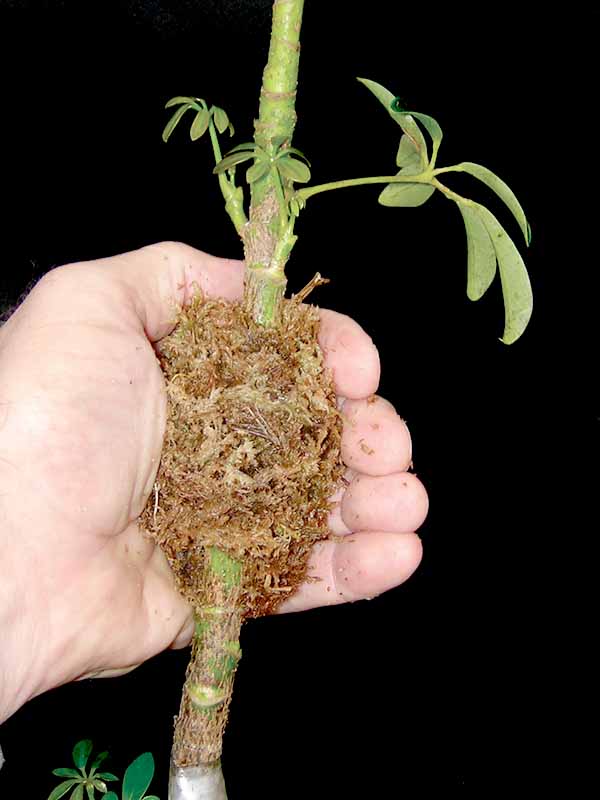
(above) President of The Rahway Garden Club, James Keane has been researching and answering garden questions since 1995. Visit ‘Keane Gardener’ blog at: keanegardener.blogspot.com
Air-layering is a form of propagation used for centuries by the Chinese. It was introduced later to America by the Europeans. In the past air-layering was used mainly for outdoor plants, but today it is also used on indoor plants. Air-layering was a hit or miss technique, often drying out or falling apart, but since the invention of plastic bags and wraps the success rate has become very high.
Many houseplants such as Croton, Fiddle-Leaf Figs, and Dracaena often outgrow their space and become leggy. Their large leaves make it hard for them to transfer enough water to their leaves so propagation by many other means is difficult. Instead of pruning them and tossing the tops away, air-layering will turn the tops into healthy new plants and encourage the bottom stalks to force new growth on the parent plant. You can keep both plants, or give one to a friend.
Supplies: peat or sphagnum moss*, a knife, rooting hormone powder*, plastic wrap, twist ties and a spray bottle for watering.
Technique:
- Decide where you want to make your cut. You might need to remove a few leaves to make room for the air-layering.
- With the knife gently cut a longitudinal cut about 1 ½ inches upwards into the branch no more than halfway in. Be slow and steady so you don’t cut though and take off the top, a common mishap.
- Put a piece of toothpick in the cut to prevent it from healing on its own. Dust the area with hormone rooting powder.
- Pack the area thoroughly with moist moss. The roots will grow into this.
- Cover the area with the plastic and fasten both top and bottom tightly with twist ties. Touch the plastic regularly to make sure the moss is wet.
- When it dries out loosen the top and moisten with a spray bottle, then retie. As the roots develop the moss will dry out faster than usual.
- When the roots have developed cut off the newly rooted plant, gently remove plastic, and then pot it up. Keep the new plant moist until it becomes established, then begin to tend to it normally.
- The parent plant will force new shoots out in a few weeks. You have now mastered another horticultural skill and watching the young plant grow is rewarding.
*Sphagnum moss and rooting hormone can be found at garden centers. Avoid popular brand name mosses that contain plant fertilizer. They will encourage leaf growth rather than root development. For step by step photo instructions go the keanegardener.blogspot.com and check out my site.
Happy gardening,
James

(above) Air-layering

